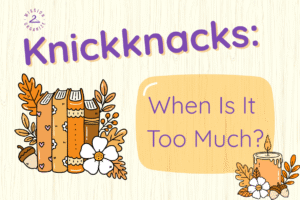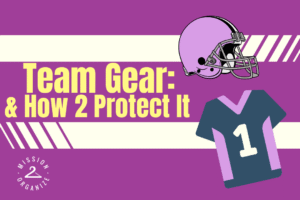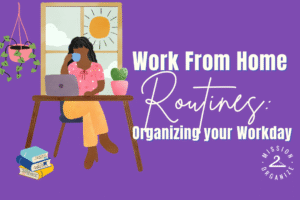I am a total book worm! When I was a kid, my favorite thing to do was to organize my bookshelves. Each time I emptied the shelves was a joyful experience. The books I had read would transport me into their worlds and the new editions would excite me with thoughts of new adventures. To this day, I still get that joyful feeling every time I get to bring order to a bookshelf.
After moving to different countries, lending books that were never returned, downsizing and simply changing interests, I have gained and lost so many books. When I was much younger my mom told me to start a list of books I had read. She envisioned a book inventory of sorts with a few notes about each author, subject categories and my opinions on what I had read. I wish I had been more vigilant about creating the inventory then. There are so many books that I don’t remember anymore and I wish I did. But it isn’t just the memories that make me wish I’d kept track. There are many other benefits to having a book inventory. Especially in this day and age when you can keep a digital inventory accessible and editable at any time. An inventory helps prevent purchasing duplicates and overbuying. It can also be shared with family members so you don’t receive duplicate books. A bonus of having the inventory is that you can track your lending on it as well. A book inventory is even a great reference for yourself or insurance companies in case of fire, flood or any other unexpected disaster.
In this article, we are going to talk about the basic principles of creating a book inventory. You can apply these principles to creating a digital spreadsheet. This digital sheet will allow you to search your list by keyword or sort it in any order that you wish. However, if you prefer, you can use the same technique to create your list offline. An offline inventory will have less flexibility and instead of an option for adding tabs in one single document, you just have to create a new list. There are some apps out there that you can use for your inventory system as well. They will make the process easier since you can enter most of the data by just scanning the book’s barcode. Use the list below as a guideline for picking an app that has features which match your needs.
1. Organize Your Books
Before you begin to create an inventory of your books, it is best to organize them. Collect your books into categories based on the way you usually search for a book. For example, I group books by author alphabetically then group authors in alphabetic order under genres. This is how I would search for a book on my bookshelf but you might be the type of person that searches for books based on the name of the book or genre. Whatever works for you is the system you want to follow to organize your books.
This is also a great time to get rid of all the books that you no longer want. You have the option of selling or donating the books that you have no need for anymore. By organizing and decluttering your books, you will make the process of the inventory that much easier. You can also watch our full video here on How 2 Organize Your Bookshelves.
2. Create the Spreadsheet
At the top of each column, choose a column title then enter your data in each row. Below you will find some suggestions for column titles. You’ll also find a list of tabs/supplementary lists that you may find useful whether you’re online or offline. I love using Google Sheets to create my spreadsheets which are then conveniently stored on Google Drive.
Must Have Column Titles
The following must have categories are the most needed and useful ones for your inventory. No matter how basic or elaborate your list is, you want to use as many of these titles as you can to categorize your records.
- Title and Author
This one is a no brainer. These two are like a book’s birth certificate. Without them the book has no identity.
- Series Name & Number
If the book is a part of a series then you’ll want to know which series it belongs to. Keep track of the volume in the series so you’ll know if you have the complete series or not.
- ISBN (International Standard Book Number)
I keep this one on record because it helps me record some extra (but sometimes needed) information (like publisher or print run) without creating extra categories. Having a record of the ISBN is a great safety net in case I forget to write down some details about the book that I might need later.
- Genre
There are times when we are in the mood for a specific type of book like a biography or light read. By recording the genre of your books, the next time you are looking to read a book in a specific genre you know where to find it.
- Format
My library, like many personal book collections today, is not limited to the books on my shelves but extends to my digital library. So, while creating an inventory I will mark the format of the books as print or digital.
- Cover
I do not categorize my books based on the cover type but if you do, you can indicate whether your book is a hardcover or paperback. The only time I wished that I marked them by cover was when I wanted to complete a series and didn’t know which cover I already had them in, but that’s when the ISBN came to the rescue.
- Location
Depending on how many books you have, it may be difficult to find the book you need when you need it. Indicate in this column the room, piece of furniture and shelf where your book is stored. When I donate a book, I track it here If I lend a book to someone I use this column to keep track of who I lent it to and when. I must confess, this step is not necessarily foolproof and doesn’t mean that I always get my books back but at least I don’t go crazy looking for a book that is not in my library anymore.
- Read It or Not
I have an abundance of unread books in my library. Every time I need a new read, I look at my inventory and it feels like I am going shopping in my own personal book store!
- Year Read
I like to keep track of the year that I read each of my books. I record the date so that if later in life I reread the book, I will know how old I was when I last read it. It’s interesting to see how your opinions about a book can change.
- Rating
This column is where I get to play Siskel and Ebert and declare whether I liked, loved or disliked this book. I use a 10-star rating, 10 being best. Yes, I am that opinionated about my books! This rating system helps me give book recommendations to friends and family. Plus, when it’s time for spring cleaning, I can easily figure out which books can be donated.
- Notes
I like to add a few notes after I rate a book. It’s kind of like writing your own Yelp review of the book! Sometimes I write a few words about the story and make note of why I liked or disliked it. I also explain if I loved the way the author told stories . This will help me when I look for more of their work.
Tabs/Supplementary Lists
Here is a list of additional categories that can make your inventory even more detailed. You can create a new tab on your spreadsheet, add any of these to your existing spreadsheet or create a new paper list to track them.
- Signed, Collector’s
If you have any books that are collectibles (perhaps signed by the author or are very rare), you can keep track of them using this list. You can also add notes on how to care for your books. I especially recommend this if you have old or valuable items in your library.
- Gift Ideas
I love to gift books. If I come across a book that I have read or heard about and know it would be of interest to a friend or family member, I will include it on this list. I put the name of the recipient, the book information and some notes about why I picked the book for this person.
- Reread It!
Although I am always in search of new books to read, there are a few all-time favorites that I wouldn’t mind rereading. On rare occasion (and for a variety of reasons) if I don’t get to finish a book, I will specify which book and the page I read last with a note about why I didn’t finish it.
- Wish List
I like to keep a list of the books I am interested in reading at some point so the next time I want to treat myself to a book or someone wants to give me a book, I just check this list. I have learned that aimlessly going to the bookstore or searching for e-books online is the equivalent of going to the grocery store hungry. And we all know how that ends.
- Don’t Own
Another tab that I keep in my spreadsheet records the books that I have read but don’t own anymore or never owned in the first place. I put all of the basic categories on this list so I know as much about the book as possible. I also make a note if I think I will ever want to own the book.
- Acquired
Although I don’t make a list of where my books came from, some people like to remember the source of the book. Was it a gift? A purchase at the airport? Did someone recommend the book to you?
- Language, Translation
I have books in two different languages (sometimes I even have the same book in both languages!) so I record that information. If the book I am reading is a translation from the original language, I also like to record the name of the translator. I may note my opinion of the translation. I truly believe that the translation can make or break a book.
The number of categories can get very detailed as you want it to get but it is totally up to you how many tabs or lists you want to add to your inventory. You might add more categories (like the publisher or print run) than we’ve mentioned here or even drop some as you use your inventory and decide which information is important to you. Tailoring your inventory based on your needs means that this inventory may just be the solution you’ve been searching for!
As technology grows, the ways of making lists and keeping track of your books continues to change. We stand by using an app or an online spreadsheet because of the control and access it affords you. However, if you choose to create your list offline, use colors and symbols to make finding what you are looking for easier. Happy Book Buying, Reading and Sharing!








